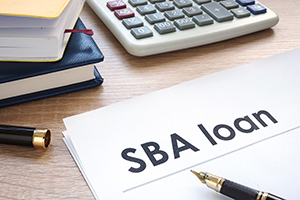
On April 6, 2020, the Small Business Association and U.S. Treasury released additional guidance regarding the Paycheck Protection Program (PPP). Please see the linked PDF here for the frequently asked questions addressed by the Small Business Association. PPP applications are now being accepted by approved SBA lenders as of April 3, 2020, for small businesses and sole proprietorships. Starting April 10, 2020, independent contractors and self-employed individuals can apply for PPP loans through approved SBA lenders. We encourage you to reach out to your current SBA lender or current banker for further guidance on the PPP application process.
Below are several key clarifications from the SBA as of April 6, 2020.
SBA – Key FAQs
- What time period should borrowers use to determine their number of employees and payroll costs to calculate their maximum loan amounts? In general, borrowers can calculate their aggregate payroll costs using data either from the previous 12 months or from calendar year 2019. For seasonal businesses, the applicant may use average monthly payroll for the period between February 15, 2019, or March 1, 2019, and June 30, 2019. An applicant that was not in business from February 15, 2019 to June 30, 2019 may use the average monthly payroll costs for the period January 1, 2020 through February 29, 2020. Please note this answer is continued in the SBA FAQs document.
- The CARES Act excludes from the definition of payroll costs any employee compensation in excess of an annual salary of $100,000. Does that exclusion apply to all employee benefits of monetary value? The exclusion of compensation in excess of $100,000 annually applies only to cash compensation, not to non-cash benefits, including:
- employer contributions to defined-benefit or defined-contribution retirement plans;
- payment for the provision of employee benefits consisting of group health care coverage, including insurance premiums; and
- payment of state and local taxes assessed on compensation of employees.
- How should a borrower account for federal taxes when determining its payroll costs for purposes of the maximum loan amount, allowable uses of a PPP loan, and the amount of a loan that may be forgiven? Under the Act, payroll costs are calculated on a gross basis without regard to (i.e., not including subtractions or additions based on) federal taxes imposed or withheld, such as the employee’s and employer’s share of Federal Insurance Contributions Act (FICA) and income taxes required to be withheld from employees. As a result, payroll costs are not reduced by taxes imposed on an employee and required to be withheld by the employer, but payroll costs do not include the employer’s share of payroll tax. For example, an employee who earned $4,000 per month in gross wages, from which $500 in federal taxes was withheld, would count as $4,000 in payroll costs. The employee would receive $3,500, and $500 would be paid to the federal government. However, the employer-side federal payroll taxes imposed on the $4,000 in wages are excluded from payroll costs under the statute.
- I filed or approved a loan application based on the version of the PPP Interim Final Rule published on April 2, 2020. Do I need to take any action based on the updated guidance in these FAQs? Borrowers and lenders may rely on the laws, rules, and guidance available at the time of the relevant application. However, borrowers whose previously submitted loan applications have not yet been processed may revise their applications based on clarifications reflected in these FAQs.
- May lenders accept signatures from a single individual who is authorized to sign on behalf of the borrower? Yes. However, the borrower should bear in mind that, as the Borrower Application Form indicates, only an authorized representative of the business seeking a loan may sign on behalf of the business. An individual’s signature as an “Authorized Representative of Applicant” is a representation to the lender and to the U.S. government that the signer is authorized to make the certifications, including with respect to the applicant and each owner of 20% or more of the applicant’s equity, contained in the Borrower Application Form. Lenders may rely on that representation and accept a single individual’s signature on that basis.




